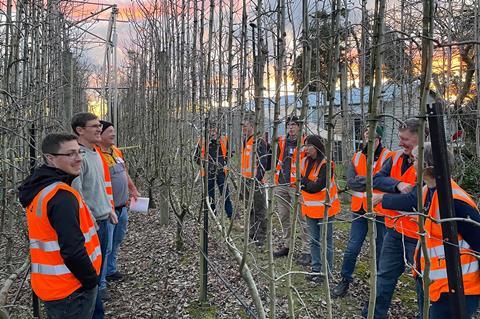New Hort Innovation and Agriculture Victoria project to examine potential transition to narrower orchard systems

A team of scientists, engineers and economists have been assembled to reimagine what orchards in the future could look like through a A$13.6m programme aimed at improving efficiency in resources and labour.
Delivered through Hort Innovation and led by Agriculture Victoria, the five-year programme will establish research sites across the country to find out whether transitioning to narrower orchard systems could bring benefits for pome and stone fruits.
Narrow orchard systems feature 2m spaces between rows of trees and keeping the canopy narrow to expose fruit and leaves to enough sunlight to maximise yield and fruit quality. This approach is attractive to field workers and amenable to robotics, automation and sensing technologies, and has the potential to use less labour, energy and increase the efficiency of inputs.
Hort Innovation chief executive officer Brett Fifield said the transformative research has boosting grower profitability top-of-mind.
“This future-focused investment has the potential to transform the way the horticulture sector designs their orchards,” Fifield said.
“It was recently estimated that workers could climb around 10,500m per hectare in a season to complete tasks such as harvest, pruning and thinning. Mount Everest is 8,848m.
“With growers at the forefront of the program’s aims, this research presents an opportunity to find more efficient to manage orchards that are more profitable, more consistent, more resilient and safer.”
Agriculture Victoria research leader in crop physiology Ian Goodwin said the research team will be estimating the benefits of narrow orchard systems.
“Through establishing experimental sites across the country, our research team is anticipating gains in marketable yield as well as the accuracy and efficiency of sensing and robot orchard operations (such as crop load estimation, pruning, thinning, pest and disease monitoring, and fruit picking) in the narrow row orchards compared to existing tree training systems,” Goodwin said.
“In addition to field experiments, we will also undertake an economic study to determine the profitability of transitioning to narrow orchard systems and will compare the benefits and costs to current standard practices within the industry.”
Apple and pear grower Jason Shields said industry is eagerly awaiting the results of this research, so it can plan for the future.



